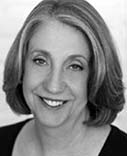
Lyn Yonack
Lyn Yonack, Editor of TAP
Lyn Yonack, MA, MSW, FABP, is a training and supervising analyst at the Western New England Institute for Psychoanalysis and faculty member at Berkshire Psychoanalytic Institute. She lives, writes, and works in Great Barrington, Massachusetts.

Lyn Yonack
When, in the late 19th century, Freud took pen to paper to engage in the hermeneutics of emotional life, he wittingly and unwittingly changed the way the modern world understood what it means to be human. In some ways, he brought his scientific mind to the poet’s domain — the penumbra of psychic space. Over time, delving into and wrestling with dreams and drives, infantile sexuality, resistance, repeating, penis envy, unconscious motivations, the uncanny, and the Oedipus, he fashioned a Talmudic-like dialectic, an opus that 100 years later we still interrogate, and create ever-new meaning and ever-fresh relevance. In effecting a sea change, again and again and again, in our understanding of the human mind and the human condition, Freud helped define the modern world.
In his writing, Freud laid the foundation and structure for our impossible, sometimes possible profession. From the earliest years of psychoanalytic discourse, colleagues curious and skeptical, acquiescent and reprobate have been engaging in an energetic dialectic, a holographic relationship with the literature. In addition to internally wrought transformations, external events conspired to reshape the discourse: the First World War, shell shock, and the Spanish flu pandemic; the Second World War and the Holocaust, which reseeded psychoanalysis in other parts of the world. Each reworking brought both resistance and embracing, a calibration of what was lost and what was gained. Again and again and again, this alive and dynamic field changes.
So too with our organization. APsaA, ever changing while resisting change, persistently contends with finger-wagging questions: Is that psychoanalysis? Who do we let in and who do we keep out? Who’s analyzable? Is that pathology or identity? Through consensus, lawsuits and bylaws, elections and resignations, and what can seem like endless discussions, we change —despite and maybe because of the resistance — even when it appears at a glacial pace.
In the spring of 2020, the world as we knew it went topsy-turvy. The reminder and fear of the novel coronavirus catapulted most of us out of our offices and into our own separate spaces. Our waiting rooms became virtual and our patients, who could, joined us from their homes, bathrooms, cars, or backyards. As many of us fumbled with a virtual setting, the world convulsed again. On May 25, in the span of 8 minutes and 46 seconds, another undeniable in-your-face reality of personal, systemic, and violent racism sparked a worldwide revolt against oppression and injustice.
We have been startled into now. We seek our footing, reckon with our place, rethink our minds, settle into a new setting. W.B. Yeats wrote in his poem, “Easter, 1916” – as quoted by one of our authors: “Now and in time to be .... [we] Are changed, changed utterly: A terrible beauty is born.” Questions that were once subject to ongoing debate now define the moment in which we find ourselves: Can real analysis be conducted from a distance by Zoom or over the phone? Can we find room for and take seriously, in all our considerations of psychic reality, material, social, and political realities? As we navigate over the telephone and the internet, reckon with discrimination, sexism, racism, exclusion, privilege and the comfort of homogeneity, and open our doors to greater inclusion and relevance, we find ourselves in uncharted territory.
If all real living is meeting, then we are always inviting and contending with emotional storms.
In 1979, the year before he died, Wilfred Bion wrote in “Making the Best of a Bad Job”: “When two personalities meet an emotional storm is created.” According to his journal, at that time he was reading the 1923 work, I and Thou, by the German philosopher Martin Buber. For Buber, “all real living is meeting.” If all real living is meeting, then we are always inviting and contending with emotional storms. These days, when we meet, contact is careful, remote, virtual, two-dimensional, one postage-stamp-sized box to another. Or meeting is eruptive, suspicious, in protest, rife with violence, aggression, passionate intensity, longing — and the potential for real contact and actual change.
Urgent, never-more-essential questions confront us: What does it mean to meet and how do we create a shelter for, not from, the storm? How do we continue to engage, not merely bear the storm, but invite it in and work with it in our practices and in our lives? My title, “Dare I Disturb the Universe?” is the central lament of an aging, modern man in the 1915 poem by the American/British poet, T.S. Eliot, “The Love Song of J Alfred Prufrock.” Our universe has been disturbed. Our work necessitates that we disturb and are disturbed, and then try to make meaning and transformations from those disturbances.
As a community, as a profession, and likely as citizens, we face a moment of profound change. This storm is ripe with opportunity and imperative to look at hatred, oppression, othering, and violence in our world, in our institutions, in ourselves. This disturbance invites us to examine how we work and grapple with what it means to be psychoanalysts, and how, to whom, and by whom we offer care. In so doing, we examine, again, what is to be human. It is a fascinating, terrifying time that may well yield understanding and aliveness, a terrible beauty.
This, the first issue of TAP under my editorship, puts forth many ways of engaging with the disturbance, with the opportunities, with the discourse, presented by this awesome moment.